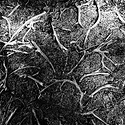What you're seeing here is Rera being lazy.
Originally, 127 film was cut to 46mm, but the backing was 47 mm to make it a tight fit in the spool and prevent fogging after the exposed roll was sealed, before processing. Tolerances being what they are, most 127 film reels will fit 46mm film with a little slop.
Rerapan, apparently, is cut with the film the same width as the backing -- simpler processing, possibly, and a strong indicator they're cutting their own from larger rolls rather than buying 46mm wide rolls from a film manufacturer and loading that -- but that puts the film outside the tolerance of the reel. if you want to continue using Rerapan (and Rerachrome), you'll probably want to do the modification to the Paterson reel mentioned above, to let the plates sit a millimeter further apart (it won't prevent processing in-spec film, just make it possible to process the too-wide Rera stock). Otherwise, I'd recommend switching over to recutting 120 as soon as you have half a dozen 127 spools (and you can buy those without film on them, though I don't recall exactly where).
There are commercial 3D printed devices available to cut 127 width from 120 (I have one in front of me right now). If you cut so the 46mm strip is on the edge with the 6x4.5 framing track, and then spool the film backward, you'll get the 6x4.5 track where a 4x4 camera expects it, and the 6x6 track where a 4x6.5 full frame 127 needs it. You'll probably need to mask the frame a little in a full frame camera (or live with a few millimeters of overlap) and you surely will have to if you have a half-frame 4x3 size camera, but this means you don't have to recycle 127 backing paper until it's too tattered to use, you can just use the backing that gets cut along with the film from 120.
In the past, however, I've cut 120 to 127 by hand -- I've read about it being done on a bandsaw, and seen video of it done with a guillotine style cigar cutter; I've done it with a utility knife, while spinning the film on my 7x12 mini-lathe. In daylight. In my experience, the fogging at the cut is much narrower than the rebate on the film, even if you accidentally cut all the way through the spool core.
As a bonus, you get a leftover strip that will make two minimum reloads for a Minolta 16 or similar 16mm camera that doesn't depend on perforations in the film.
 127 Top by telecast, on Flickr
127 Top by telecast, on Flickr 127 side by telecast, on Flickr
127 side by telecast, on Flickr 127 lap by telecast, on Flickr
127 lap by telecast, on Flickr 127 Top by telecast, on Flickr
127 Top by telecast, on Flickr 127 side by telecast, on Flickr
127 side by telecast, on Flickr 127 lap by telecast, on Flickr
127 lap by telecast, on Flickr







 .
.

